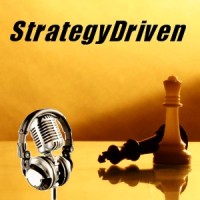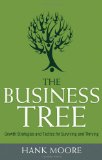The Big Picture of Business: Goal Setting… An Important Part of Strategic Planning.
Human beings live to attract goals.
Organizations get people caught in activity traps…unless managers periodically pull back and reassess in terms of goals. Managers lose sight of their employees’ goals.
Employees work hard, rather than productively. Mutually agreed-upon goals are vital.
Failure can stem from either non-achievement of goals or never knowing what they were. The tragedy is both economic and humanistic. Unclear objectives produce more failures than incompetence, bad work, bad luck or misdirected work.
When people know and have helped set their goals, their performance improves. The best motivator is knowing what is expected and analyzing one’s one performance relative to mutually agreed-upon criteria.
Goal attainment leads to ethical behavior. The more that an organization is worth, the more worthy it becomes. Most management subsystems succeed or fail according to the clarity of goals of the overall organization.
How to Find Goals:
- Examine problems.
- Study the organization’s core business.
- Strengths, Weaknesses, Opportunities and Threats.
- Portfolio analysis.
- Cost containment.
- Human resources development.
- Motivation and commitment.
Make Goal Setting a Reality:
- Start at the top.
- Adopt a policy of strategic planning.
- Strategic goals and objectives must filter downward throughout all the organization.
- Training is vital.
- Continual follow-up, refinement and new goal setting must ensue.
- Programs must be competent, effective and benchmarked.
- A corporate culture must foster all goal setting, policies, practices and procedures.
Priorities for Goals:
- Focus on important goals.
- Make goals realistic, simple and attainable.
- Reward risk takers.
- Recognize that trade-offs must be made.
- Goals release energy.
- Information leads to dissemination, leading to teaching-training, leading to insight, leading to understanding, leading to knowledge, leading to wisdom.
- View goals as long-term, rather than short-term.
Ways in Which Goals Improve Effectiveness:
- Defines effectiveness as the increase in value of people and their activities as resources.
- Recognizes that humans are achievement and success creatures.
- Goals infuse meaning into work and work into other aspects of life. Life is fully lived when it has meaning.
- One cannot succeed without definitions of success. One must expect something to achieve success.
- Failure is inevitable and is the best learning curve for success.
- One’s goals start from within, not from work situations. The goal-oriented person adapts to the work environments.
- Collaborations with other people create success. One cannot be successful alone or working in a vacuum.
- One is always dependent upon other people, and other people are dependent upon you.
- Commitments must be made to other people.
- One must view the future and change as affirmative, in order to succeed.
- Knowledge of results is a powerful force in growing and learning.
- Without goals, one cannot operate under self-control.
- Objectives under one’s own responsibility helps one to identify with the objectives of the larger organization of which he-she is a part. Sense of belonging is enhanced.
- Achieving goals which one set and to which one commits enhances a person’s sense of adequacy.
- People who set and are striving to achieve goals together have a sense of belonging, a major motivator for humanity.
- Because standards are spelled out, one knows what is expected. The main reason why people do not perform is that they do not know what is expected of them.
- Through goal setting and achievement, one becomes actualized.
- Goal setting creates a power of one’s life…especially the part that relates to work.
- With goals, one can be a winner. Without goals, one never really succeeds…he-she merely averts-survives the latest crisis.
7 Measurements of Successful Budgeting and Planning:
- The business you’re in. You’re highly dedicated, talented, resourceful and give customers what they cannot really get elsewhere.
- Running the business. Business is approached as both an art and a science. Operations continue to streamline and are professional and productive. Demonstrated integrity and dependability assure customers that the team will perform magnificently.
- Financial. Keeping the cash register ringing is not the only reason for being in business. You always give customers their money’s worth. Your charges are fair and reasonable. Business is run economically and efficiently, with excellent accounting procedures, payables-receivables practices and cash management.
- People. The company is people-friendly. Collaborations assure that top talent is assembled. The team is empowered, likeable, competent and demonstrate initiative and judgment.
- Business Development. Customer service is always the focus…for and with clients. Communications are open, frequent, professional and with a deep sense of caring.
- Body of Knowledge. There is a sound understanding of the relationship of each business function to the other. You provide leadership for progress, rather than following along. You develop-champion the tools to change.
- The Big Picture. Approach business as a Body of Work…a lifetime track record of accomplishments. You have and regularly update-benchmark a strategy for the future, shared company Vision, ethics, Big Picture thinking and ‘walk the talk’.
About the Author


 StrategyDriven Podcasts focus on the tools and techniques executives and managers can use to improve their organization’s alignment and accountability to ultimately achieve superior results. These podcasts elaborate on the best practice and warning flag articles on the StrategyDriven website.
StrategyDriven Podcasts focus on the tools and techniques executives and managers can use to improve their organization’s alignment and accountability to ultimately achieve superior results. These podcasts elaborate on the best practice and warning flag articles on the StrategyDriven website.